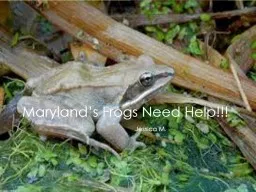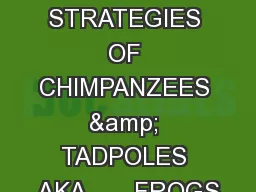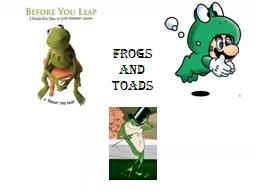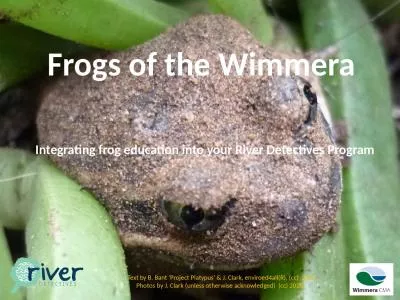PPT-Maryland’s Frogs Need Help!!!
Author : briana-ranney | Published Date : 2016-06-14
Jessica M Why Frogs Are Important We can get new medicines from frogs that can save lives Frogs are bioindicators if they are around you can tell how well the environment
Presentation Embed Code
Download Presentation
Download Presentation The PPT/PDF document "Maryland’s Frogs Need Help!!!" is the property of its rightful owner. Permission is granted to download and print the materials on this website for personal, non-commercial use only, and to display it on your personal computer provided you do not modify the materials and that you retain all copyright notices contained in the materials. By downloading content from our website, you accept the terms of this agreement.
Maryland’s Frogs Need Help!!!: Transcript
Download Rules Of Document
"Maryland’s Frogs Need Help!!!"The content belongs to its owner. You may download and print it for personal use, without modification, and keep all copyright notices. By downloading, you agree to these terms.
Related Documents














